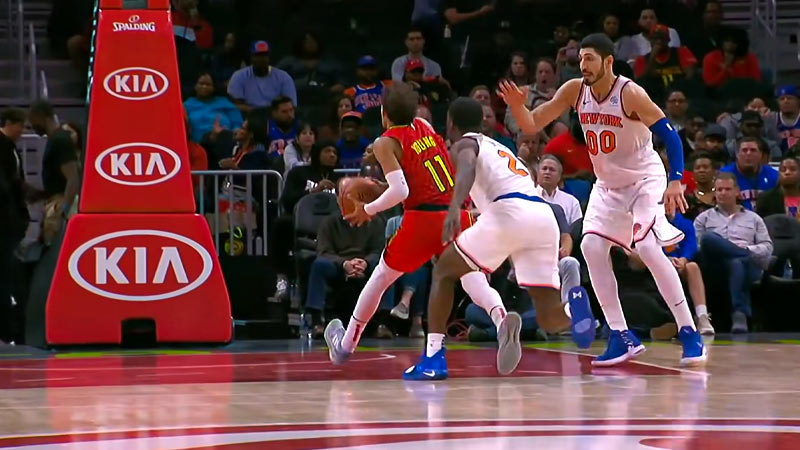Basketball is a dynamic and strategic sport that requires teams to devise effective plans to outmaneuver their opponents and secure victory on the court. These plans, known as strategies, encompass a range of offensive and defensive tactics, player positioning, and play execution.
By understanding and implementing various strategies, teams can maximize their chances of success and adapt to different game situations.
In this blog post, we will delve into the concept of basketball strategy, exploring its key components and shedding light on some frequently asked questions.
What Is a Strategy in Basketball?
In basketball, a strategy refers to the overall plan or approach adopted by a team to achieve specific goals during a game. It involves various elements, such as offensive and defensive tactics, player positioning, and the execution of specific plays.
Strategies can be tailored to the strengths and weaknesses of a team, as well as the strengths and weaknesses of the opponent. Offensive strategies focus on creating scoring opportunities and maximizing the team’s offensive efficiency.
This may involve employing different offensive sets, such as the pick-and-roll, motion offense, or fast break, to exploit the defense and create open shots or driving lanes. Strategies may also involve emphasizing ball movement, spacing, and player movement to create confusion and mismatches in the defense.
Defensive strategies aim to disrupt the opposing team’s offense and prevent them from scoring. This can include various defensive formations, such as man-to-man defense, zone defense, or full-court press.
Most Important Offensive Strategies
Here are a brief description of the 10 most important offensive strategies.
Fast Break
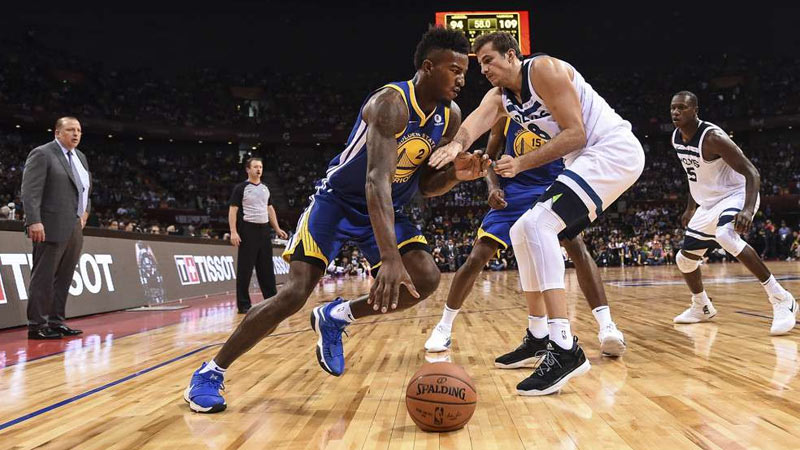
Source: fantraxhq.com
The fast break is an important offensive strategy in basketball that focuses on quickly transitioning from defense to offense after gaining possession of the ball.
It relies on speed, coordination, and quick decision-making to catch the defense off-guard and create scoring opportunities before they can set up their defense. In a fast break, players sprint up the court, aiming to create numerical advantages and exploit openings in the defense.
The primary goal is to score before the defense can recover. This strategy requires players to communicate, make accurate passes, and execute fast-paced plays to convert fast break opportunities into points.
Pick-and-Roll
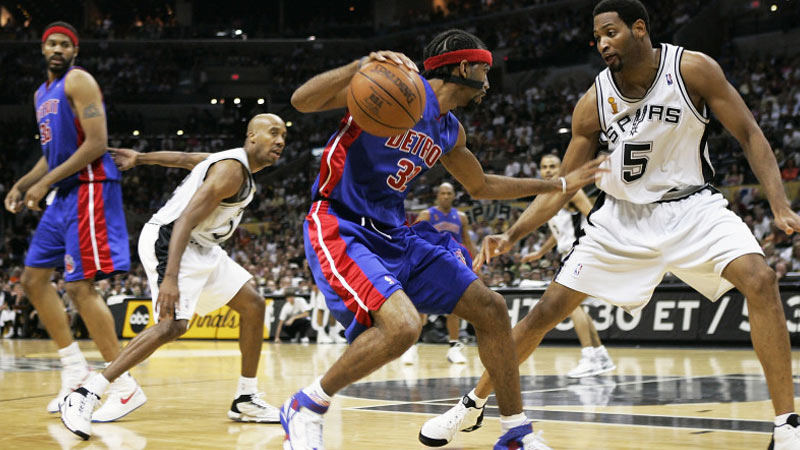
Source: bleacherreport.com
The pick-and-roll is a fundamental offensive strategy that involves two players working together to create scoring opportunities. It typically involves a ball handler and a teammate setting a screen (pick) to impede the defender guarding the ball handler.
The ball handler then uses the screen to drive toward the basket or create space for a jump shot. The screener has options too; they can roll toward the basket for a potential pass or set a pop-out screen to create space for an open shot.
The pick-and-roll is effective because it forces the defense to make decisions and react quickly, often leading to mismatches or defensive breakdowns. It requires good communication, timing, and chemistry between the ball handler and the screener.
Motion Offense
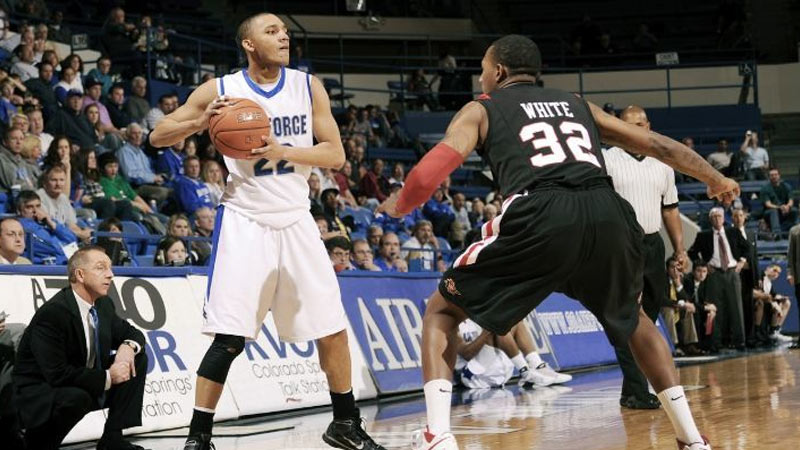
Source: basketballforcoaches.com
Motion offense is a flexible and dynamic strategy that emphasizes constant player movement, ball movement, and spacing on the court. It involves players reading the defense, making cuts, setting screens, and passing the ball to create scoring opportunities.
Instead of relying on set plays, motion offense focuses on continuous motion and player reactions to exploit the defense’s weaknesses. It encourages off-ball movement, such as backdoor cuts, screen-the-screener actions, and dribble hand-offs.
The objective is to create confusion, open passing lanes, and scoring opportunities through constant motion and player involvement. Motion offense requires high basketball IQ, good decision-making, and effective communication among teammates to maintain fluidity and capitalize on defensive mistakes.
Triangle Offense
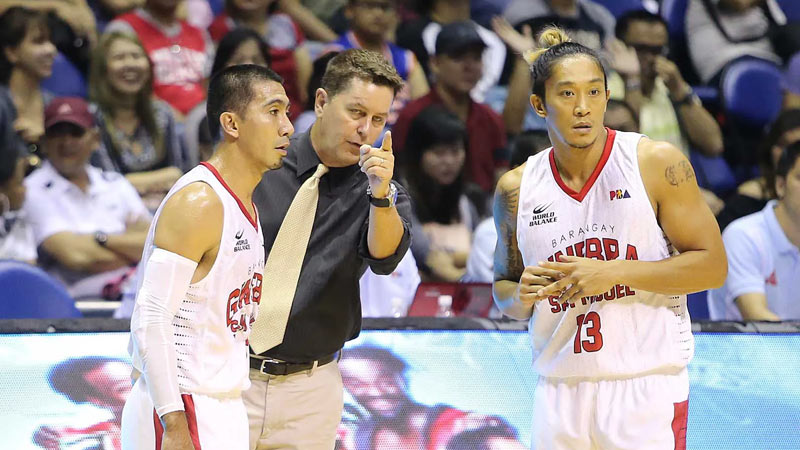
Source: newyorker.com
The triangle offense is a well-known offensive strategy associated with legendary coach Phil Jackson. It involves positioning players in a triangle formation on the court, with one player in the low post, one in the corner, and one on the wing. The remaining two players play in the high post and at the top of the key.
The triangle offense emphasizes ball movement, player movement, and reading the defense to create scoring opportunities. It involves continuous passing, cutting, and screening actions within the triangle, creating options for shooters, cutters, and post players.
The triangle offense provides a structured framework for players to exploit mismatches, create open shots, and facilitate player collaboration. It requires discipline, teamwork, and a deep understanding of spacing and timing to execute effectively.
Isolation
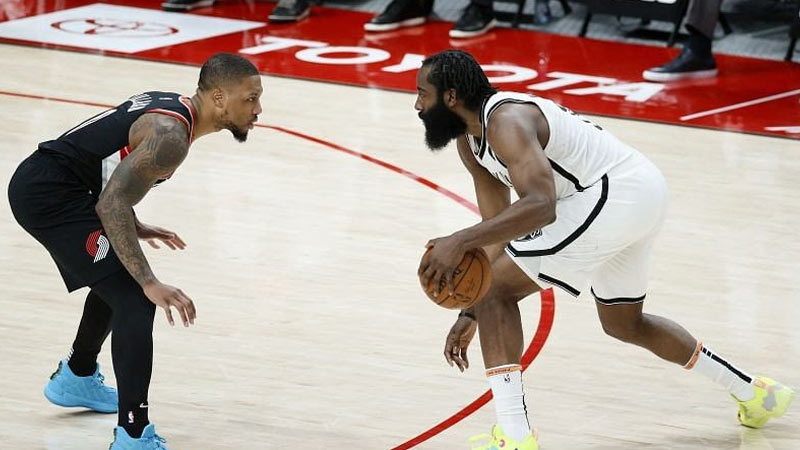
Source: nbablast.com
Isolation is an offensive strategy that involves clearing out one side of the court to allow a skilled offensive player to go one-on-one against their defender. It is commonly used when a team has a player who excels in individual scoring or has a favorable matchup.
By isolating the player, the team aims to create space for the offensive player to use their skills and create scoring opportunities.
This strategy requires the other players to space the floor and be ready to provide support if needed, either by setting screens or being in a position to receive a pass if the defense collapses.
Post-Up
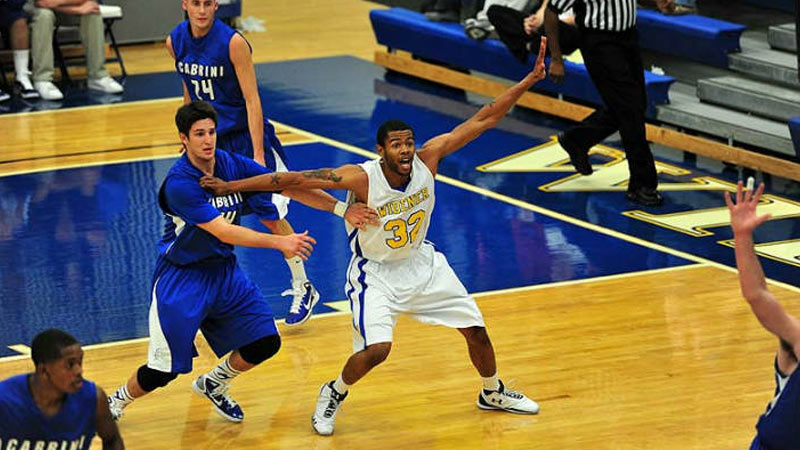
Source: basketballforcoaches.com
The post-up strategy involves getting the ball to a strong and skilled player near the low post area, usually close to the basket. This player, often a center or power forward, uses their size and strength advantage to establish position and score efficiently.
The team can either initiate the post-up through a direct entry pass or by running specific plays to get the player open in the post. Post-up strategies are effective for generating high-percentage scoring opportunities, drawing fouls, and creating opportunities for kick-out passes to open teammates if the defense collapses.
Transition Offense
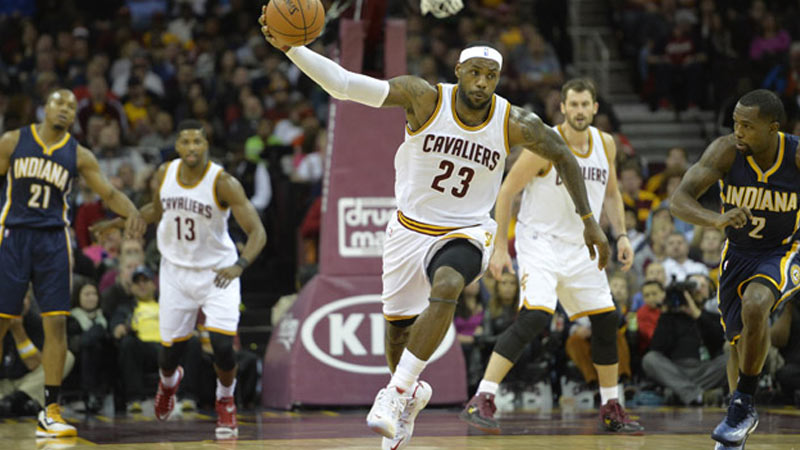
Source: cbssports.com
Transition offense focuses on capitalizing on fast break opportunities after a defensive stop or a turnover. The objective is to quickly move the ball up the court before the defense can set up and exploit the numerical advantage. In transition offense, players sprint to get into advantageous positions on the court, often spreading out to create spacing and open lanes for fast breaks.
The primary goal is to score before the defense can recover, but if a scoring opportunity is not immediately available, teams may flow into their half-court offense.
Successful transition offense requires good communication, decision-making, and the ability to make quick, effective passes and finishes at a fast pace.
Spread Offense
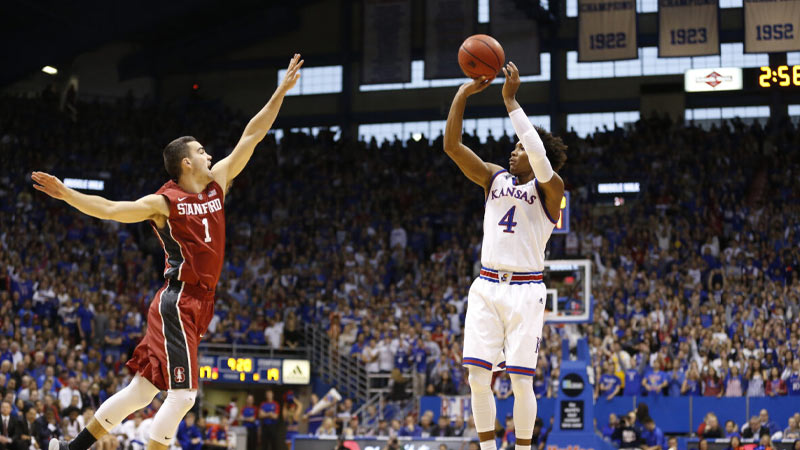
Source: kusports.com
The spread offense is characterized by players positioning themselves on the perimeter, creating space, and opening driving lanes to the basket. This strategy often involves utilizing shooters who can stretch the defense and force opponents to cover a larger area.
By spreading the floor, teams aim to create driving opportunities, draw help defense, and generate open three-point shots. The spacing allows for effective ball movement, player movement, and the potential for penetration and kick-out passes.
The spread offense requires players to have good shooting and driving abilities, as well as the vision to make quick decisions and exploit openings in the defense.
Dribble Drive Motion
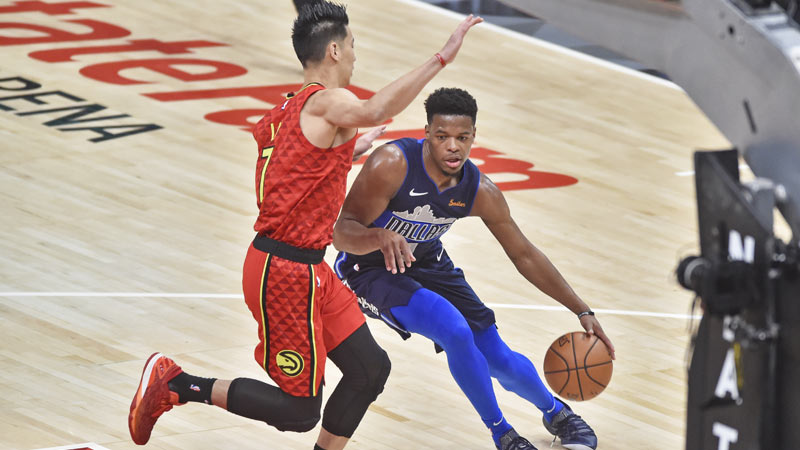
Source: fastmodelsports.com
The dribble drive motion offense relies on aggressive dribble penetration to create scoring opportunities. In this strategy, players aim to beat their defenders off the dribble and attack the basket.
The offense focuses on continuous movement, with players often driving to the hoop or kicking the ball out to open shooters on the perimeter. This strategy requires skilled ball handlers, quick decision-making, and effective spacing to prevent help defense from clogging the driving lanes.
The dribble drive motion offense can create chaos for the defense, generate free-throw attempts, and create open shots, but it also requires players to have the ability to finish at the rim or make accurate passes to open teammates.
Princeton Offense
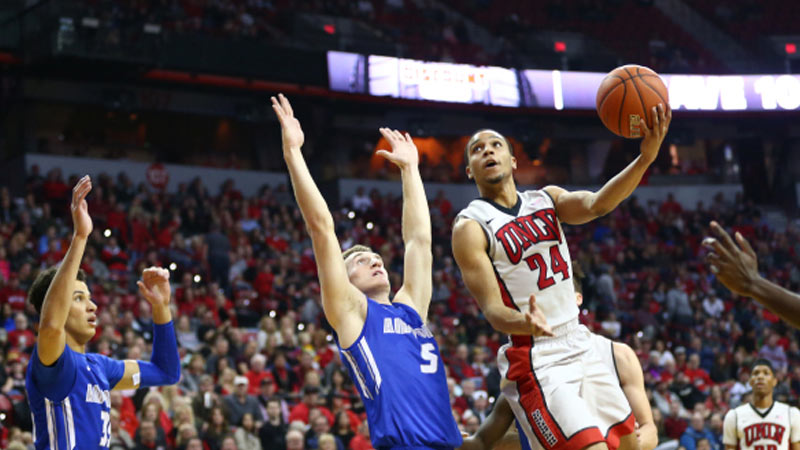
Source: reviewjournal.com
The Princeton offense is a complex offensive system that emphasizes teamwork, player movement, and backdoor cuts. It involves constant motion, screens, and off-ball actions to create confusion and exploit defensive breakdowns.
The Princeton offense typically features a high-post player who serves as a facilitator, using passing skills, and screening to initiate actions. This offense requires good basketball IQ, passing skills, and a high level of coordination among the players.
It can create open shots, and backdoor opportunities, and exploit mismatches. The Princeton offense is known for its versatility and adaptability, allowing teams to adjust based on the opponent’s defensive strategies.
It’s worth noting that these offensive strategies are not mutually exclusive, and teams often employ a combination of them based on their personnel, the opponent’s strengths and weaknesses, and the flow of the game.
Most Important Defensive Strategies
Here are the most common defensive strategies basketball players should learn.
Man-to-Man Defense
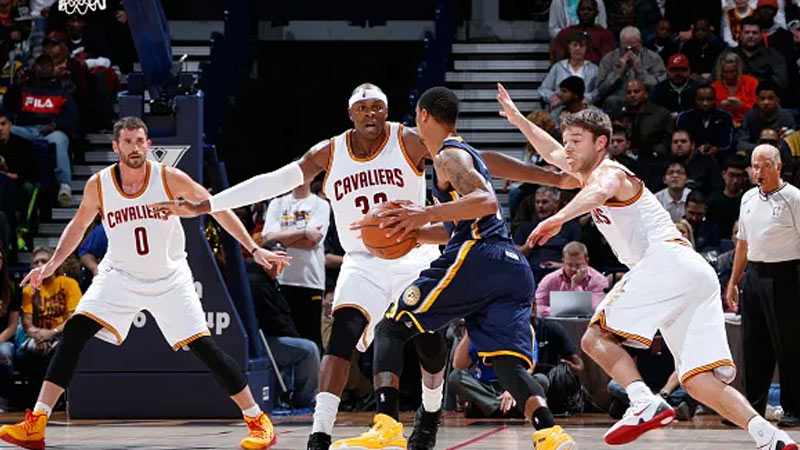
Source: hoopsking.com
Man-to-man defense is a fundamental and widely used strategy in basketball. In this approach, each defensive player is assigned to guard a specific opponent, maintaining close proximity and actively contesting their movements.
The primary goal is to prevent the offensive player from scoring or making effective plays. Man-to-man defense relies on individual defensive skills such as quickness, agility, and defensive positioning.
It emphasizes on-ball pressure, denying passing lanes, and providing help defense when needed. This strategy allows for effective switching and helps maintain defensive accountability by ensuring each player is responsible for guarding their assigned opponent.
Zone Defense
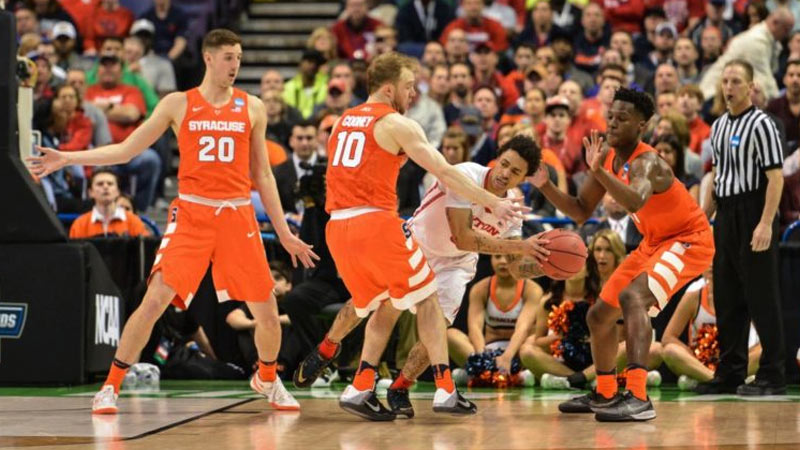
Source: basketballhq.com
Zone defense is a collective defensive strategy where the defensive players are responsible for guarding specific zones or areas on the court rather than individual opponents. The aim is to clog passing lanes, protect the basket, and force the offense into taking difficult shots.
Zone defenses can vary, such as the 2-3 zone, 3-2 zone, or 1-3-1 zone, depending on the positioning of players. It requires strong communication, teamwork, and spatial awareness to rotate and cover the open areas effectively.
Zone defenses are often used to disrupt offenses, particularly those heavily reliant on individual matchups or penetration. They can also be effective against teams with limited outside shooting threats.
Full-Court Press
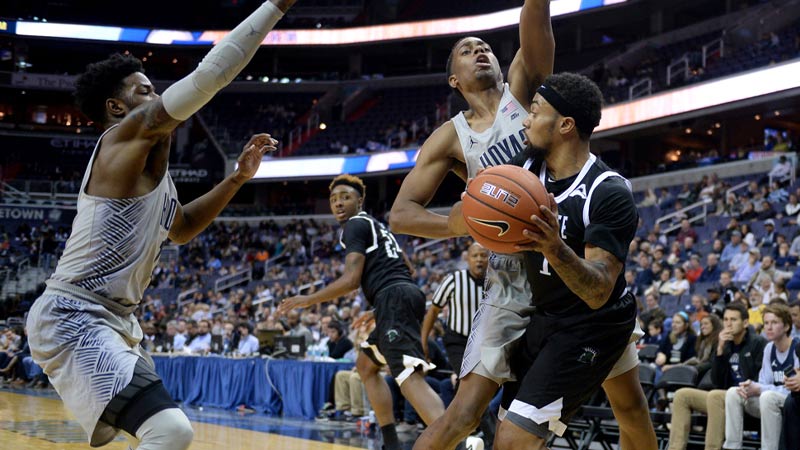
Source: fastmodelsports.com
The full-court press is an aggressive defensive strategy where the defensive team applies intense pressure on the opponent’s ball handlers throughout the entire length of the court. The purpose is to force turnovers, disrupt the opposing team’s offensive flow, and create fast-break scoring opportunities.
It often involves multiple defenders trapping the ball handler or denying passing options. The full-court press can be mentally and physically demanding, requiring quickness, stamina, and strong defensive anticipation.
It can be particularly effective against teams with weaker ball handlers or those prone to turnovers. However, it also carries the risk of leaving openings if not executed properly, which can be exploited by skilled opponents.
Half-Court Trap
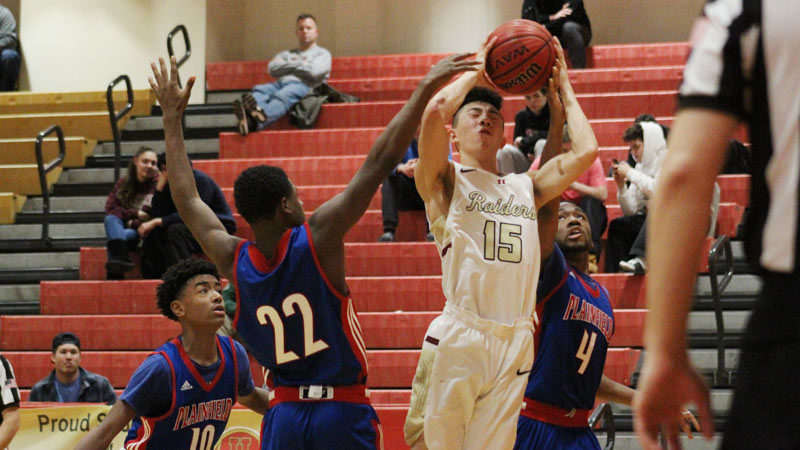
Source: tapinto.net
The half-court trap is a defensive strategy that involves trapping the ball handler in the frontcourt, typically near the half-court line or sideline. It aims to force turnovers, disrupt the offense, and create transition scoring opportunities.
The trap is executed by two defenders, who work together to cut off passing options and create a double team on the ball handler. The remaining defensive players rotate and cover the open areas to prevent easy passes.
The half-court trap can be an effective surprise tactic or used strategically during critical moments of the game. It requires coordination, quick reactions, and solid communication between defenders to successfully execute the trap and recover to defensive positions.
Box-and-One Defense
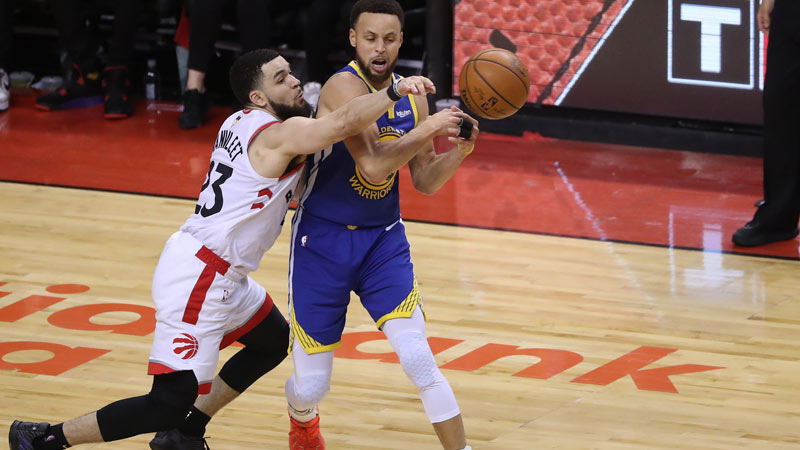
Source: raptorsrapture.com
The box-and-one defense is a specialized strategy typically used to neutralize an outstanding offensive player while maintaining a solid team defensive structure. In this approach, four defenders play in a box formation to protect the paint and prevent easy scoring opportunities, while one defender, the “chaser,” is assigned to closely guard the opponent’s best offensive player.
The chaser’s role is to deny the offensive player the ball and disrupt their offensive rhythm. This strategy aims to force other players on the opposing team to step up and carry the offensive load.
The box-and-one defense requires strong individual defense from the chaser and effective communication between the defenders to rotate and help when necessary.
Matchup Zone Defense
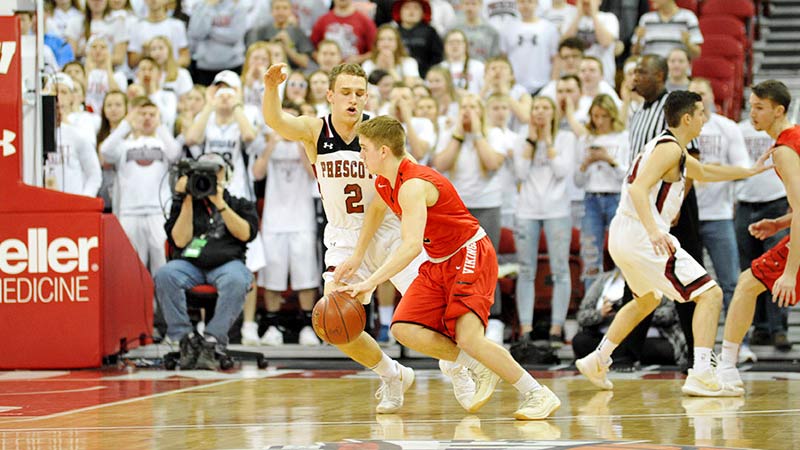
Source: coachad.com
The matchup zone defense is a hybrid defensive strategy that combines elements of both man-to-man and zone defense. It aims to confuse the offense by assigning defenders specific players to guard within a defined area of the court.
Players in the matchup zone defense must be versatile and have the ability to switch defensive assignments as the offense moves. The strategy relies on communication, teamwork, and the ability to anticipate and react quickly to offensive movements.
It allows defenders to apply pressure on the ball while also providing help defense and closing passing lanes. The matchup zone defense is effective against teams with strong individual scorers and can disrupt offensive flow by forcing teams to rely on outside shooting.
Pack-Line Defense
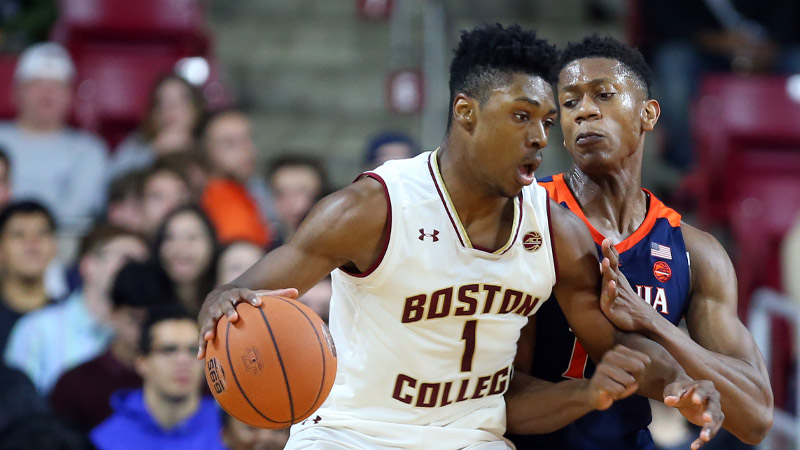
Source: fastmodelsports.com
The pack-line defense is a popular defensive strategy that focuses on clogging the paint and denying easy drives to the basket. It involves defenders sagging off their opponents and packing the area near the basket, making it difficult for the offense to penetrate or get open shots near the rim.
The defenders prioritize help defense, positioning themselves to provide support and contest shots without leaving their assigned players open. The pack-line defense aims to force opponents into taking contested mid-range jump shots or shooting from the perimeter.
It requires disciplined positioning, communication, and coordinated rotations to maintain the integrity of the defense and prevent easy scoring opportunities.
Switching Defense
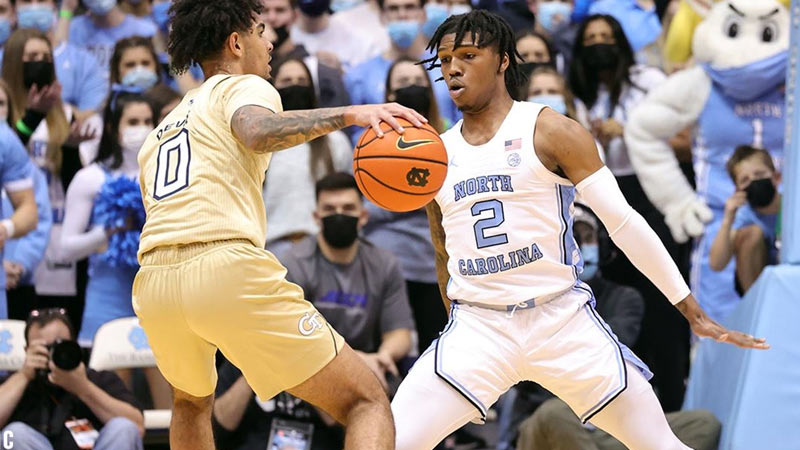
Source: tarheeltimes.com
Switching defense is a strategy where defenders switch assignments when screens or off-ball actions occur. It aims to deny offensive players any advantage gained through screens or mismatches. Switching defense requires versatile and mobile defenders who can guard multiple positions effectively.
It helps disrupt the offense’s flow by eliminating open passing lanes and forcing them to adjust their game plan. Switching can be effective in preventing open shots and minimizing the effectiveness of pick-and-roll plays.
However, it requires strong communication and coordination among defenders to ensure that switches occur seamlessly and that no offensive player is left unguarded.
Press Defense
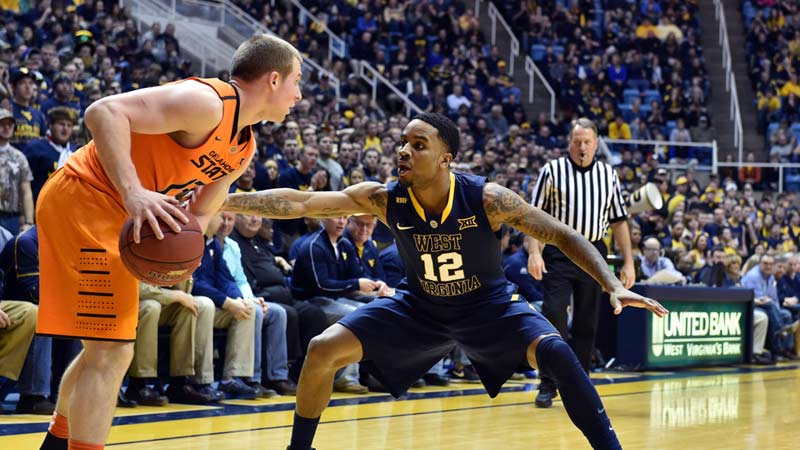
Source: fastmodelsports.com
Press defense is an aggressive defensive strategy that involves applying full-court pressure on the opposing team, usually immediately after a made basket or during inbound situations. The objective is to disrupt the opponent’s offensive rhythm, force turnovers, and create fast-break opportunities.
There are different variations of press defense, such as the full-court man-to-man press or the trapping press. Press defense can put tremendous pressure on ball handlers, making it difficult for them to bring the ball up the court or initiate their offensive sets.
It requires high energy, quickness, and anticipation from the defenders, as well as a solid understanding of defensive rotations and trapping principles.
Run and Jump Defense
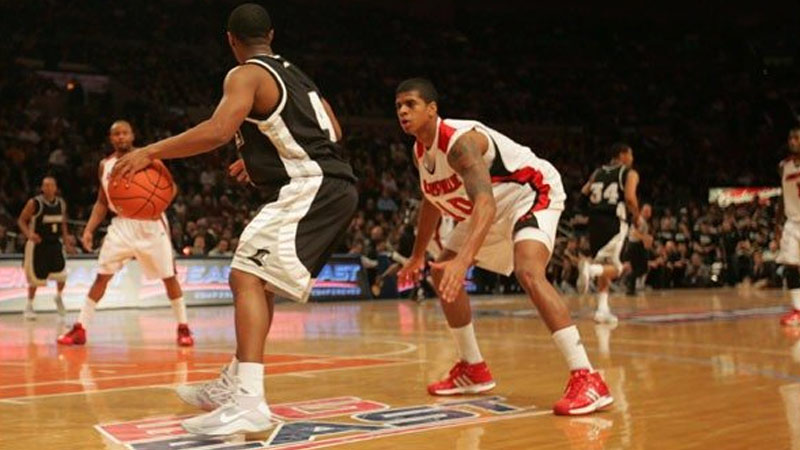
Source: hoopcoach.org
The run and jump defense, also known as the scramble defense, is an aggressive and chaotic defensive strategy. It involves defenders quickly trapping or double-teaming the ball handler, attempting to force turnovers, or creating hurried and rushed offensive decisions. The defense looks to disrupt passing lanes, create chaos, and take advantage of offensive mistakes.
Run and jump defense is often employed as a surprise tactic to change the momentum of a game or during specific game situations. It requires excellent speed, anticipation, and coordination among the defenders to effectively execute the traps and rotations.
These defensive strategies offer coaches and teams various options to adapt their approach based on the opponent’s strengths, weaknesses, and game situations.
Successful defensive strategies depend on a combination of player skill, discipline, teamwork, and the ability to make adjustments throughout the course of a game.
FAQs
What role does strategy play in basketball?
Strategy plays a pivotal role in basketball as it provides a framework for teams to achieve their goals. It encompasses offensive strategies, such as creating scoring opportunities and maximizing efficiency, as well as defensive strategies, which aim to disrupt the opponent’s offense.
By employing effective strategies, teams can exploit strengths, mitigate weaknesses, and adjust to different game situations.
How do offensive strategies in basketball work?
Offensive strategies involve creating plays, formations, and tactics to generate scoring opportunities. This may include employing pick-and-rolls, motion offense, or fast breaks to outmaneuver the defense and create open shots. Strategies may also emphasize ball movement, spacing, and player movement to confuse the defense and exploit mismatches.
What are some common defensive strategies in basketball?
Defensive strategies focus on disrupting the opponent’s offense and preventing scoring. Examples include man-to-man defense, zone defense, full-court press, matchup zone defense, and pack-line defense.
These strategies involve positioning, rotations, and communication to deny the offense easy scoring opportunities and force turnovers.
Can strategies change during a basketball game?
Yes, strategies can change during a basketball game based on factors such as the score, time remaining, and adjustments made by the opposing team. Coaches often make strategic decisions, such as altering defensive formations or implementing new plays, to adapt to evolving game situations and exploit opportunities.
How important is teamwork in executing basketball strategies?
Teamwork is crucial in executing basketball strategies. Strategies require players to communicate effectively, understand their roles, and coordinate their movements on both ends of the court.
Successful strategies rely on players’ ability to trust and rely on each other, making teamwork an integral component of executing game plans.
Wrapping Up
In basketball, strategies form the foundation upon which teams build their game plans and strive for success. Whether it’s offensive strategies aimed at creating scoring opportunities or defensive strategies focused on disrupting the opponent’s offense, these plans provide structure and guidance to teams in their pursuit of victory.
By understanding the various components of basketball strategy and consistently implementing them on the court, teams can gain a competitive edge, maximize their strengths, and adapt to changing game situations.
The intricate interplay between strategy, teamwork, and execution creates a captivating and dynamic environment in which the outcome of each game is shaped.

